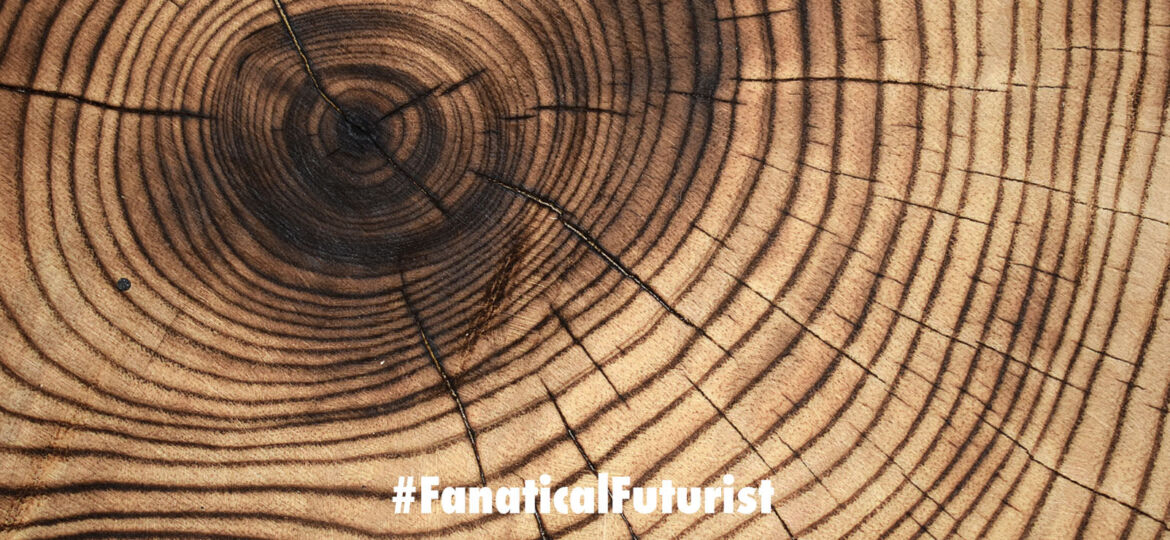
WHY THIS MATTERS IN BRIEF
Being able to 3D print wood opens a whole new world of opportunities and will improve sustainability.
 Love the Exponential Future? Join our XPotential Community, future proof yourself with courses from XPotential University, connect, watch a keynote, or browse my blog.
Love the Exponential Future? Join our XPotential Community, future proof yourself with courses from XPotential University, connect, watch a keynote, or browse my blog.
We can create genetically engineered wood, grow wood in a petri dish in a lab, and we can 3D print all manner of things on demand now, from aircraft engines and rocket engines, to buildings, clothes, food, and even steaks. But so far one thing has been out of reach – wood. Oddly enough the most trafficked wild product in the world isn’t ivory or rhino horn, but rosewood, an endangered tree verging on extinction as demand for rosewood furniture in China clears out forests in places like Madagascar. But what if an identical material could be 3D printed from wood waste?
Two years ago, pioneers in the 3D printing industry started exploring new materials.
“We realized really quickly that wood waste is a material that could be transformed for 3D printing,” says Virginia San Fratello, chair of the design department at San Jose State University and one of the founders of Forust, a startup that is now launching as part of Desktop Metal, a larger 3D printing company. The new process can print wood with a grain that mimics any type of tree, from ash to mahogany. The technology uses two by products from the wood industry.
“A tree is made of lignin and cellulose,” says Ric Fulop, CEO of Desktop Metal. “When you make things out of trees, whether it’s furniture or paper, you’re essentially dematerializing the tree…what we’re trying to do is put that back together.”

Courtesy: Desktop Metal
The process spreads thin layers of sawdust, and inkjets a nontoxic binder, including lignin, the part of natural wood that helps hold it together, to recreate the grain of wood layer by layer.
Unlike particle board or laminate, the grain goes fully through the material, so it can be sanded and refinished like wood. A product like a chair or bowl can also be printed in its finished form, without waste. It’s also possible to easily print detailed shapes.
“We can make incredibly complex geometries that would probably take a craftsman weeks or a month,” says San Fratello. “That kind of complexity is free with additive manufacturing.”
Over time, designers might use the process to make materials that go beyond the qualities of natural wood – a guitar or a speaker, for example, could potentially look like wood but have characteristics in the grain that help improve the sound of the product.
Each year, an estimated 15 billion trees are cut down – at the same time that companies and countries are spending billions to try to protect forests for their climate benefits. Only some of that wood is logged sustainably. And much of each tree still ends up as waste. There’s a huge supply of the sawdust and lignin needed for 3D printed wood.
“They pay you to pick it up,” says Fulop. “It’s going into landfill right now. Hundreds of millions of metric tons of waste is generated every year just in the US alone.”
The process could also make use of small branches that wouldn’t be used for lumber, but that need to be cleared out of forests in places like California to help prevent forest fires.
The company plans to work with companies and designers to make furniture, architectural accents, and home goods. But not, Fulop says, something like two-by-four lumber. It’s already working with Yves Behar’s Fuseproject on its first collection. The cost of the final product is competitive with wood, and with complex or large designs, may be less expensive. It can be mass-produced quickly at a large scale, but the company envisions one of the benefits being the fact that it can be printed locally on demand, so products don’t have to be shipped long distances.
If a product eventually breaks or wears out, it could be potentially be ground out and reprinted into something new. For companies that are aiming for circularity, such as Ikea, it could conceivably be one way to change how furniture is made.
“This is the first time you have a circular process for wood manufacturing,” says Fulop.
















